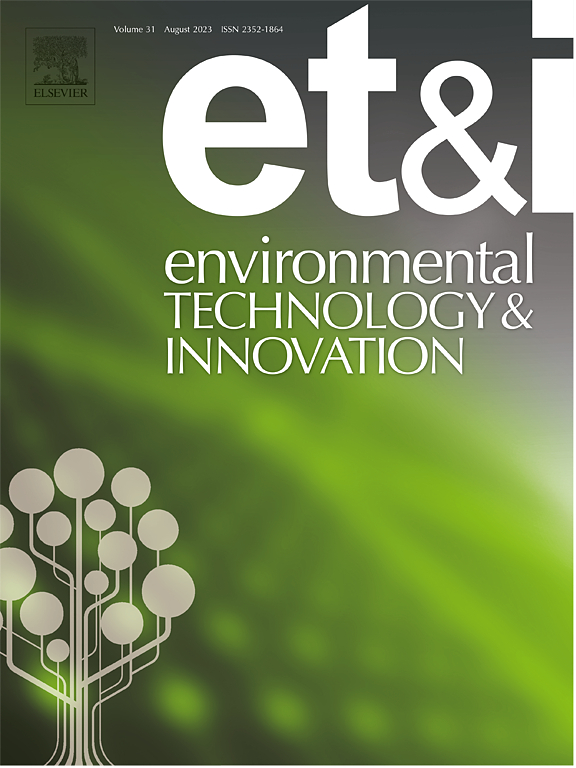The optimization of the multi-component organic wastes in mixed aerobic composting ratio based on antibiotic resistance gene reduction
IF 6.7
2区 环境科学与生态学
Q1 BIOTECHNOLOGY & APPLIED MICROBIOLOGY
引用次数: 0
Abstract
In recent years, the co-processing of agricultural and rural domestic waste for composting has emerged as a primary approach to promote resource recycling. However, the presence of antibiotics and other harmful chemicals in the raw materials can induce the generation of antibiotic resistance genes (ARGs) during the composting process, thereby triggering multiple potential risks, including environmental and ecological risks and human health risks. Currently, the production patterns of ARGs in the co-processing of multiple raw materials remain unclear, and research on reduction technologies is also inadequate. Therefore, this study aimed to develop a multi-material ratio scheme for achieving high compost maturity and effective ARG reduction. Aerobic composting experiments used varying ratios of four agricultural and rural organic wastes with a simple centroid design. The results demonstrated that special cubic response models for E4/E6 and the total reduction rates of four ARG types were successfully fitted. The optimal ratios were 40.5 % kitchen waste, 11.5 % pig manure, 28 % human feces, and 20 % wheat straw. Under these optimal conditions, the total reduction rates of ARGs increased by 0.31 %–19.64 %. These findings provide valuable theoretical support for enhancing ARG removal through mixed composting.
基于抗生素抗性基因还原的多组分有机废弃物混合好氧堆肥配比优化
近年来,农业和农村生活垃圾的协同处理堆肥已成为促进资源循环利用的主要途径。然而,原料中抗生素等有害化学物质的存在会在堆肥过程中诱导抗生素耐药基因(ARGs)的产生,从而引发多重潜在风险,包括环境生态风险和人体健康风险。目前,多种原料协同加工中ARGs的生成规律尚不清楚,还原技术研究也不足。因此,本研究旨在开发一种多材料配比方案,以实现高堆肥成熟度和有效减少ARG。好氧堆肥试验采用不同比例的四种农业和农村有机废物,采用简单的质心设计。结果表明,E4/E6的特殊立方响应模型和4种ARG类型的总还原率均拟合成功。最佳配比为餐厨垃圾40.5 %、猪粪11.5 %、人粪28 %、麦秸20 %。在此优化条件下,ARGs的总还原率提高了0.31 % ~ 19.64 %。这些发现为通过混合堆肥提高ARG的去除提供了有价值的理论支持。
本文章由计算机程序翻译,如有差异,请以英文原文为准。
求助全文
约1分钟内获得全文
求助全文
来源期刊

Environmental Technology & Innovation
Environmental Science-General Environmental Science
CiteScore
14.00
自引率
4.20%
发文量
435
审稿时长
74 days
期刊介绍:
Environmental Technology & Innovation adopts a challenge-oriented approach to solutions by integrating natural sciences to promote a sustainable future. The journal aims to foster the creation and development of innovative products, technologies, and ideas that enhance the environment, with impacts across soil, air, water, and food in rural and urban areas.
As a platform for disseminating scientific evidence for environmental protection and sustainable development, the journal emphasizes fundamental science, methodologies, tools, techniques, and policy considerations. It emphasizes the importance of science and technology in environmental benefits, including smarter, cleaner technologies for environmental protection, more efficient resource processing methods, and the evidence supporting their effectiveness.
 求助内容:
求助内容: 应助结果提醒方式:
应助结果提醒方式:


